Trial Polder Andijk
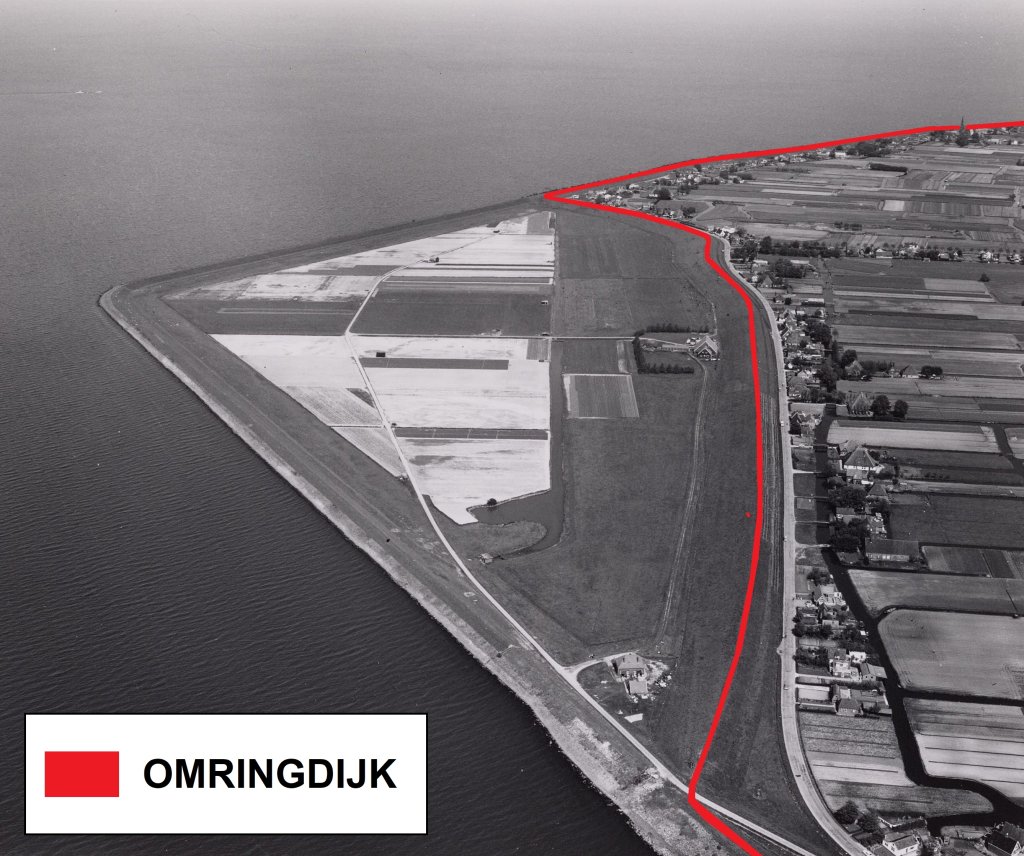
Near Andijk there is a special polder, protruding like a promontory into the old Zuiderzee. This is the so-called Proefpolder, part of the Zuiderzee Works. This was followed by the large IJsselmeer polders Wieringermeer, Noordoostpolder and Eastern and Southern Flevoland. But it began with the Pilot Polder. The history of that very first, small IJsselmeerpolder goes back to the storm surge of January 1916.
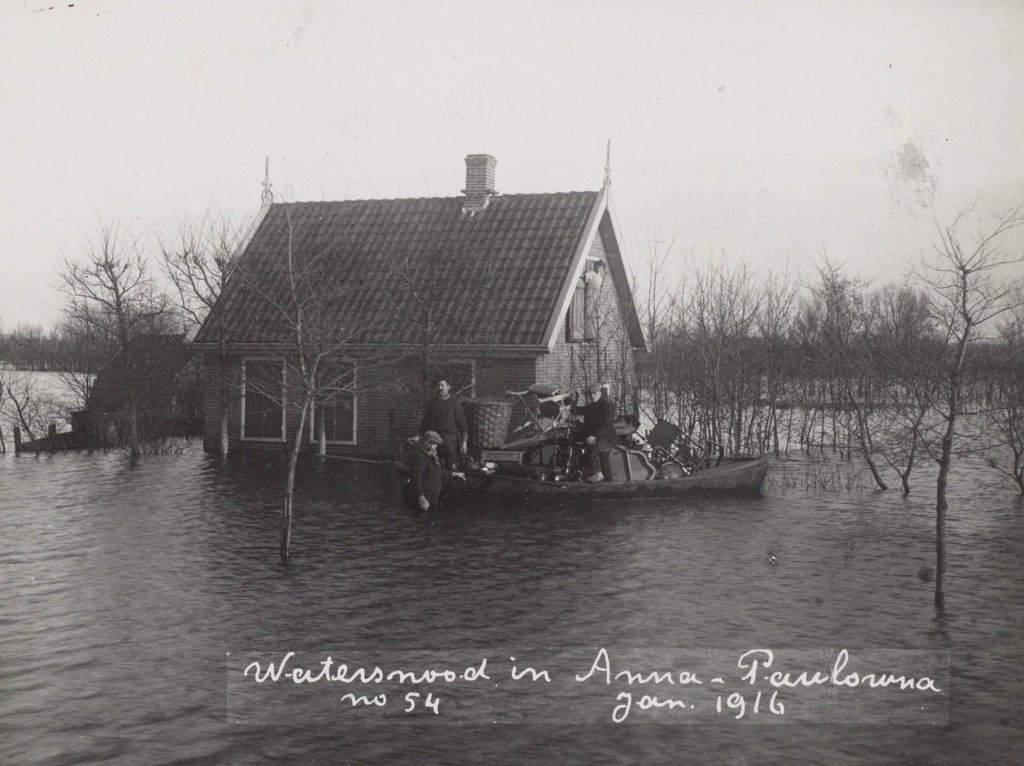
On the night of January 13-14, 1916, a very heavy northwest storm hit the entire Zuiderzee area. In North Holland, the dikes of Waterland and the Anna Paulownapolder broke. Large floods were the result. Near Andijk and Wervershoof that night the situation was critical. For hours, waves slammed over the dike, which consequently became totally soaked on the inside.
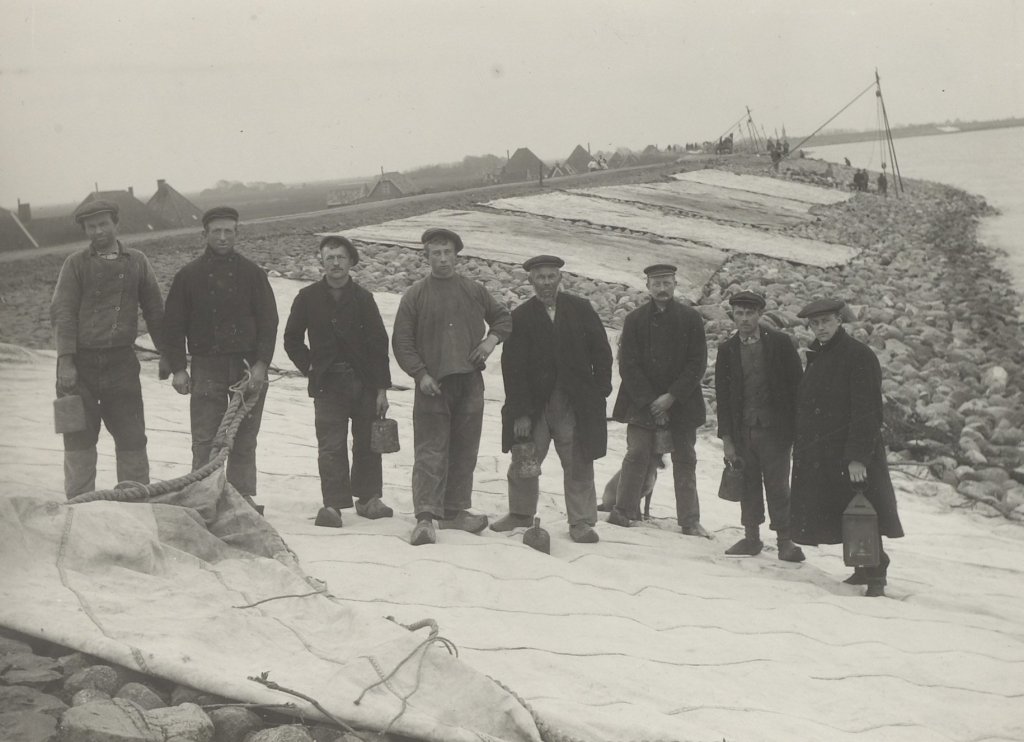
First cracks formed in the mushy dike, then over hundreds of meters large bites slipped out of the inside of the dike. All night the men of the village were busy in the cold and the water under the leadership of overseer Lodewijk Louwers. They took tarpaulins from the dike warehouse and used them to cover the threatened spots.
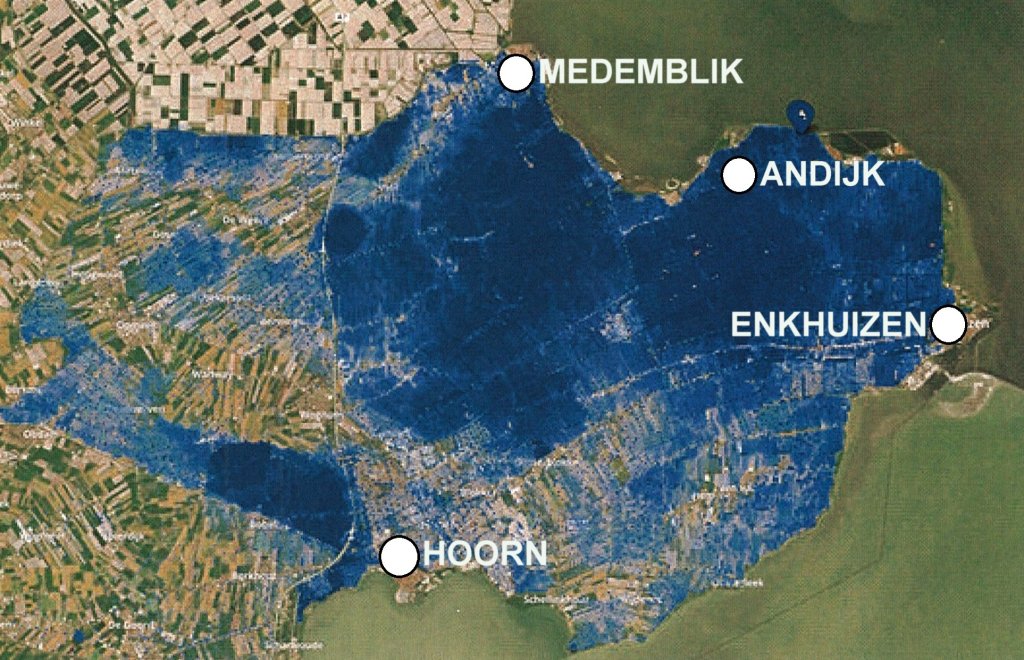
In the nick of time, they managed to preserve the dike. Otherwise all of this area would have disappeared under the salt water.
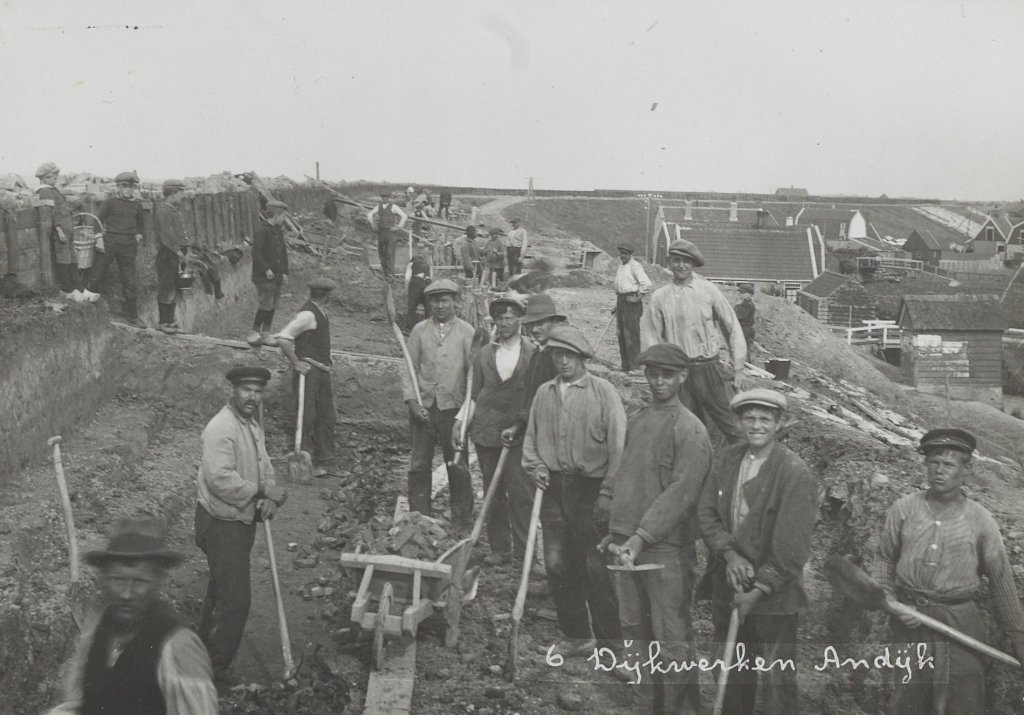
Of course, still in 1916 a large-scale dike improvement started. For this purpose in Andijk about three hundred houses that stood right against the dike were demolished or moved.
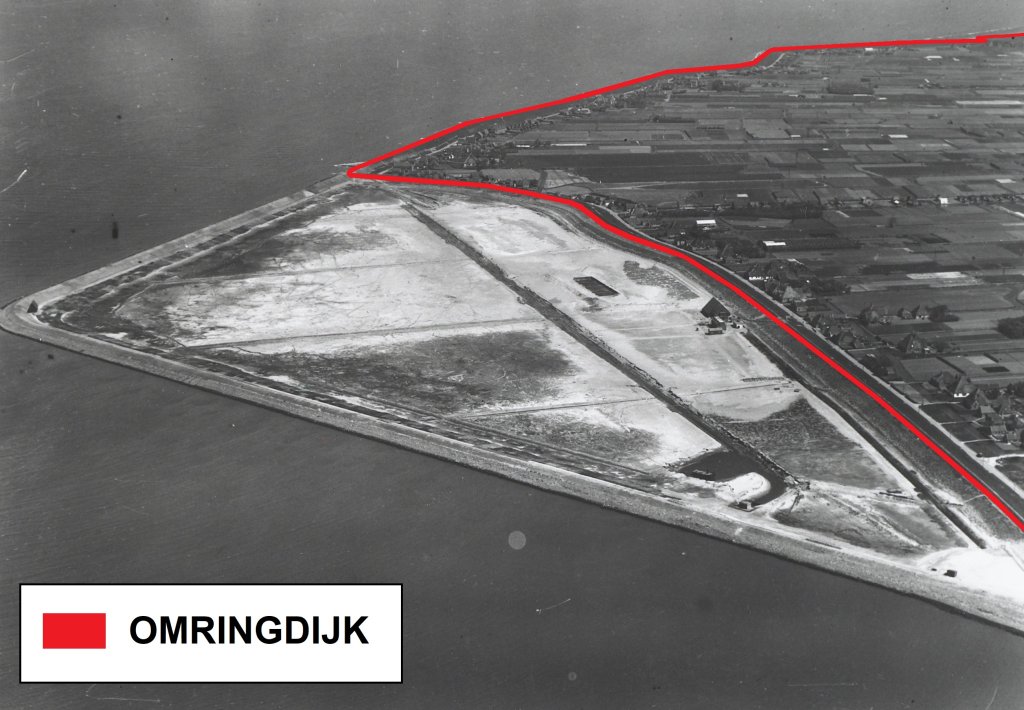
The storm surge of 1916 provided the decisive impetus for the acceptance of Cornelis Lely's plan for closing off and partially reclaiming the Zuiderzee. In 1927, the diking of the Wieringermeerpolder began. But prior to that enormous work, the Proefpolder was constructed at Andijk in 1926-1927. The approximately forty-acre polder was drained in August 1927.
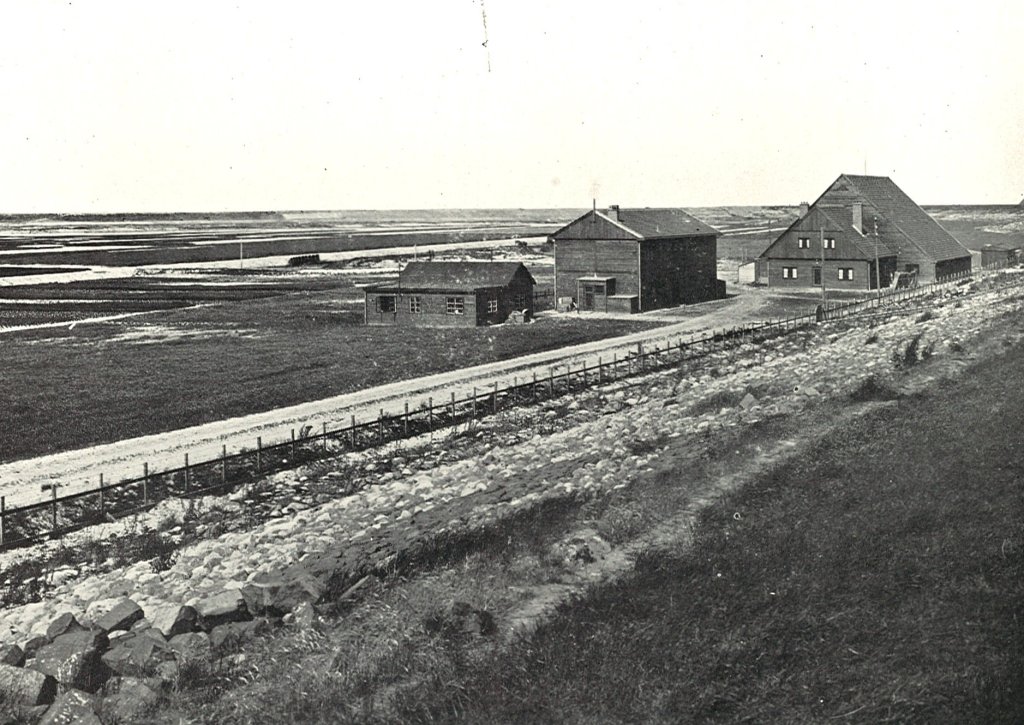
The purpose of the Pilot Polder was research. How could the new soil best be dewatered and desalinated? What crops grew well on the drained soil? In the fall of 1928, the first plots were sown. That year, a farm with a laboratory was also built in the polder.
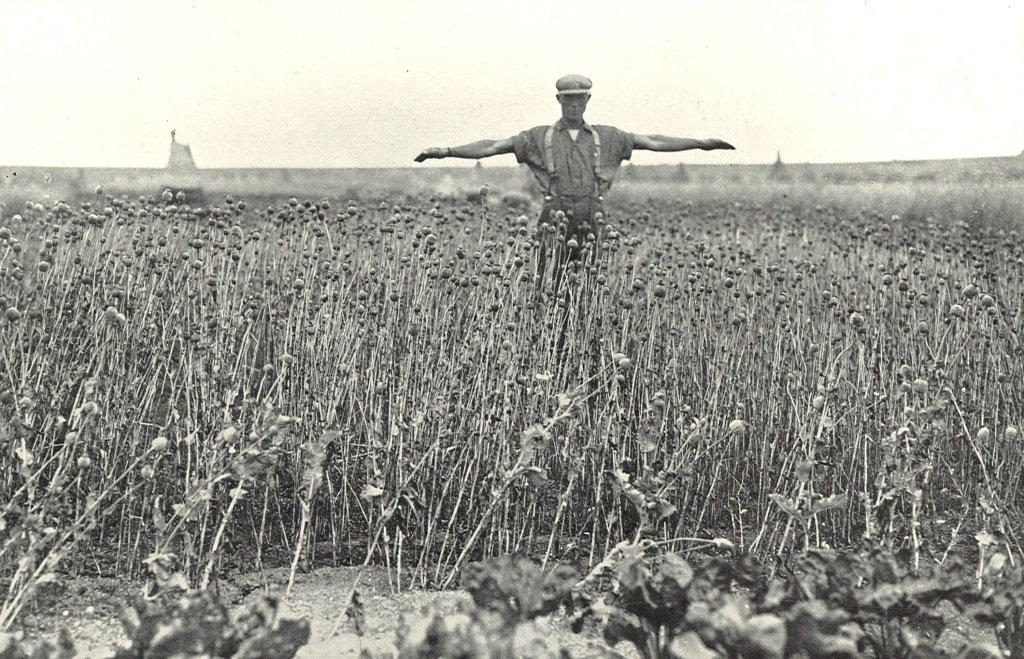
In the Proefpolder, dozens of cultivated crops were planted, from canary seed to home cress and from winter wheat to spinach. Thus valuable experience was gained that came in very handy in the Wieringermeer, which was drained in 1930. This photo shows a farm worker in a field of blue-moon seed.
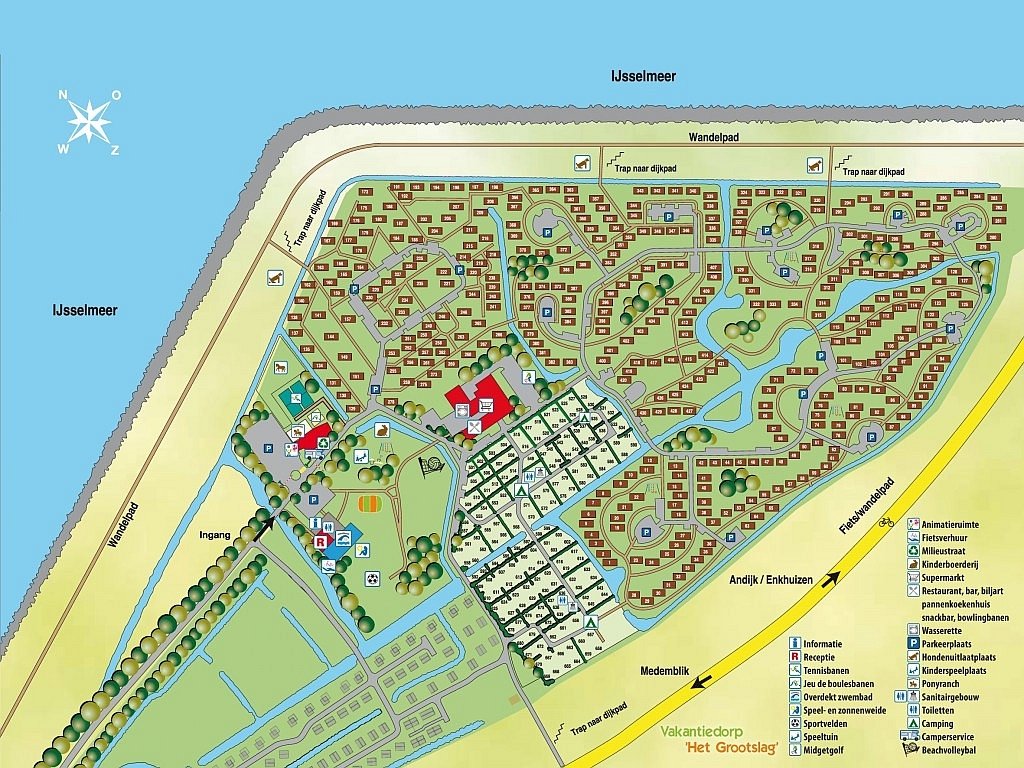
After the trials ended, the State leased the Trial Polder. Later it came into the hands of the municipality of Andijk. Many inhabitants of the village had a horticultural business there. After 1970 the polder was given a recreational purpose. Nowadays the old Proefpolder is completely filled with vacation bungalows.
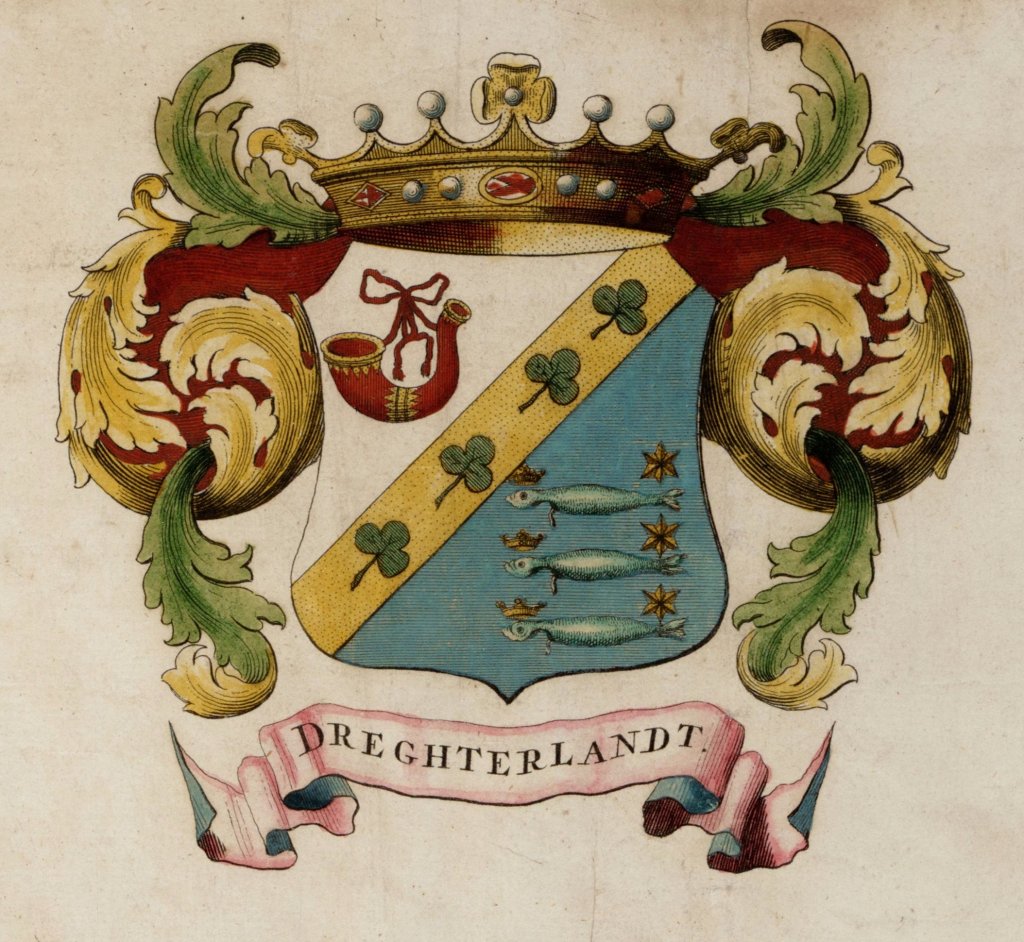
The government drew its conclusions from the (near) dike failures of 1916: it was not responsible that Health the sea dikes was fragmented over dozens of, organizationally limited water boards. She therefore brought the management of all North Holland's sea dikes into a new central water board, the Hoogheemraadschap Noordhollands Noorderkwartier. The four West Frisian water boards thus lost Health for the Omringdijk. Here we see the coat of arms of the former West Frisian water board Drechterland.